Whether you took your last vacation on a sunny beach or in a dry desert location, an indoor palm tree can certainly inspire you to think of those times while sitting at your desk. They bring elegance and relaxed ambiance indoors.
These exotic tropical trees are common houseplants that are popping up in homes and offices more frequently than ever.
Whether you display yours on a plant stand or in a beautiful large floor pot, you’ll be happy that you’ve chosen an indoor palm plant to grace your home or office.
- Related: Houseplant Lists
Learn more about them and 10 essential indoor palm tree care tips to grow them successfully.
Indoor Palm Tree Care Overview
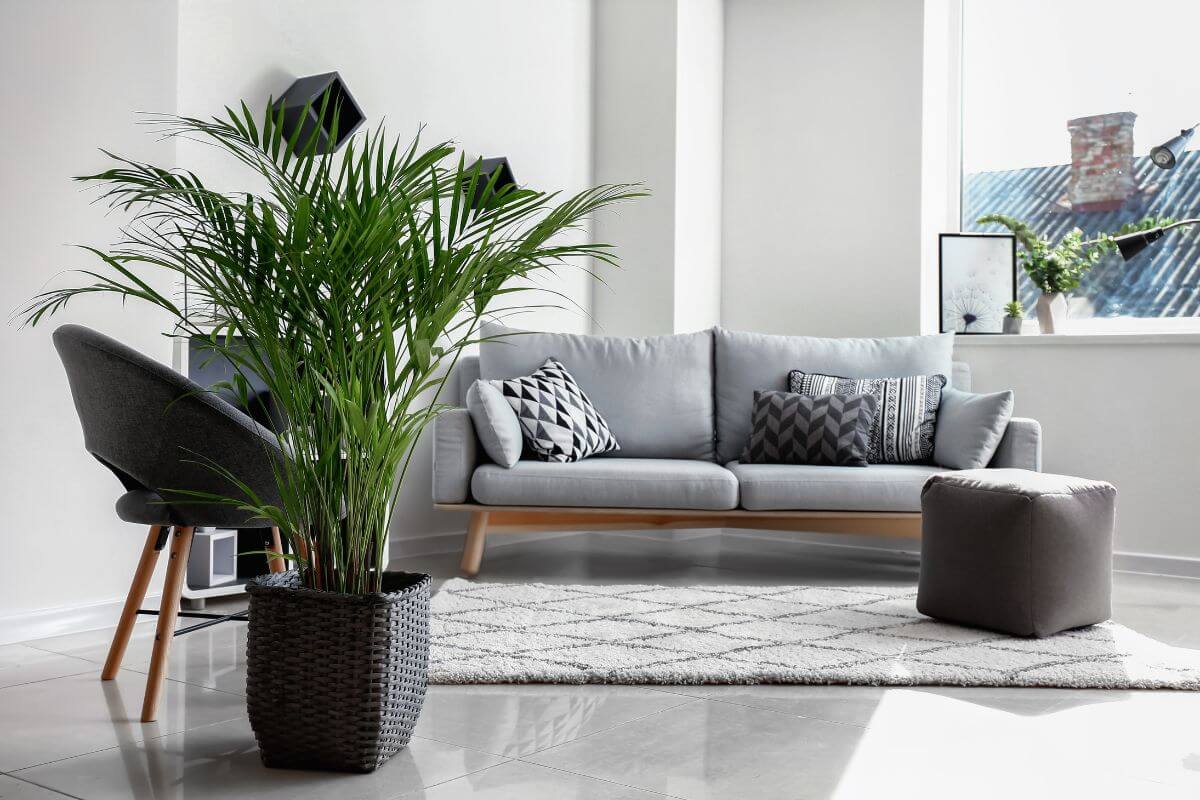
Palms generally grow either in lush rainforests and jungles or in very arid deserts. When cultivated indoors, they are usually slow growers. These tropical plants will help teach patience. You can expect two to three fronds annually.
Palms do well in smaller pots where their root system can fill up the container. They do not need to be repotted often or without reason.
All things considered, they are relatively adaptable and can tolerate cooler temperatures down to about 50°Fahrenheit, although they do not like sudden temperature changes.
While they can thrive if your home or office has central heating, they do not take kindly to drafts. So position it away from heating and air conditioning vents.
Indoor palms love bright indirect light, but not direct sunlight exposure. They can tolerate and adapt to low-light conditions.
They also tend to be sensitive to chemicals, so using aerosol sprays in the vicinity of your palm may cause a negative reaction.
If you need to use insecticides, use a product indicated for use on palms. For example, instead of using chemical pesticides, choose a natural pesticide.
Tips for Growing a Healthy Indoor Palm Tree
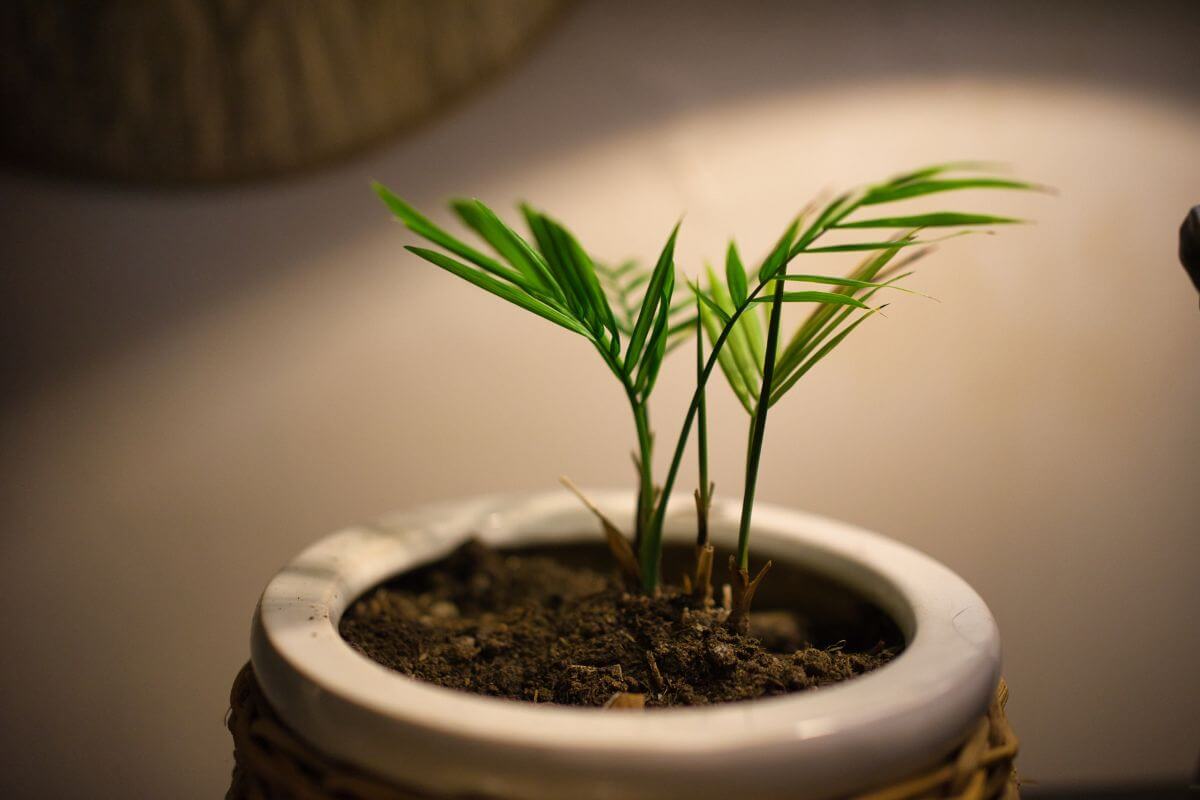
Proper care is key when growing any type of plant indoors. Here are some good guidelines to keep your indoor palm healthy and thriving.
- Related article if your Indoor Palm Tree is Dying
1.Choose the Right Palm Variety
If you are acquiring a palm, research the kind of palm you are interested in before bringing it into your home or office.
Check out mature growth heights, how much space fronds may need, and if it is adaptable to the type of indoor light you can provide. What are the ideal humidity and temperature levels?
If you really love a particular species, you can adjust environmental conditions with heat, space humidifiers, and even fans for improved air circulation.
If you want a low-maintenance palm, look for an indoor species that does well with lower lighting and dryer air.
2. Quality Potting Soil
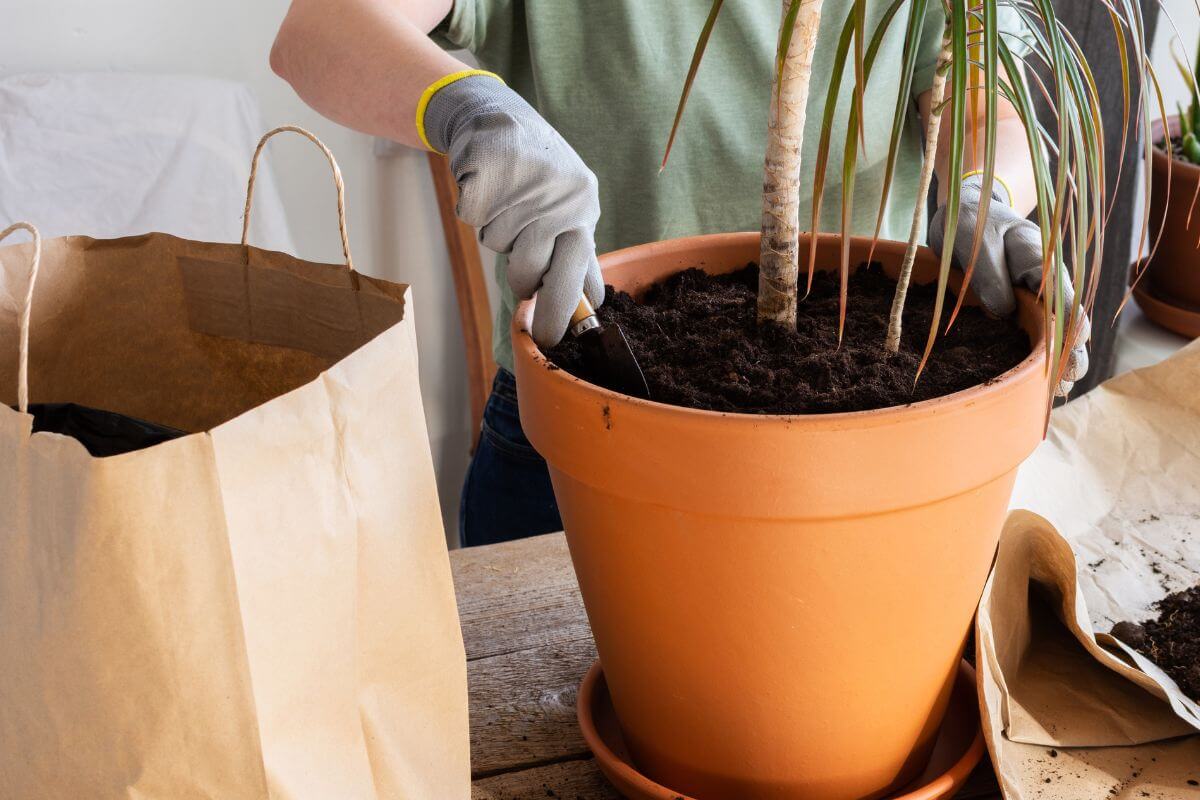
A good growing medium is crucial and a good place to begin. A quality potting mix specifically for palms is ideal because it will be formulated to keep the soil moist, but well-draining.
In general, palms can adapt to various soil pH levels, but soil type should be loose and light.A good range for pH levels is usually between 6.3 and 6.8.
If you like to blend your own potting soil mix, try 30% peat moss and 30% perlite to begin. Then add in 10% of regular potting soil, 10% pumice, and 10% coarse sand.
Finally add in the final 10% in tree bark shavings. A harder wood like redwood will decompose more slowly.
3. Provide Sufficient Light
Light is equally vital for the well-being and growth of your palm. Most palms prefer bright, but indirect light for up to six to eight hours per day.
A spot near a window, underneath a skylight or roof window, or a glass door is ideal. Palms can also benefit from artificial lighting, with grow lights 15 to 20 inches above the fronds.
Should your tips of palm leaves turn brown, they may not be receiving sufficient light, especially if the leaves fall. Without an adequate source of light, the palm will be at more risk of infection and disease.
4. Maintain Humidity Levels
Humidity is often taken for granted because we humans tend to be more comfortable with lower humidity levels than members of the plant world.
While your plant will be delighted when it’s warm or hot, it will not appreciate air conditioners or heating systems that remove humidity from the air. Most palms will do well in standard home temperatures.
When winter rolls around, consider moving it to a warmer room or location. If your heating is on, place a container of water near the palm to improve humidity.
Low humidity levels are commons reasons palm plants develop brown leaf tips and loss of foliage.
5. Water Regularly
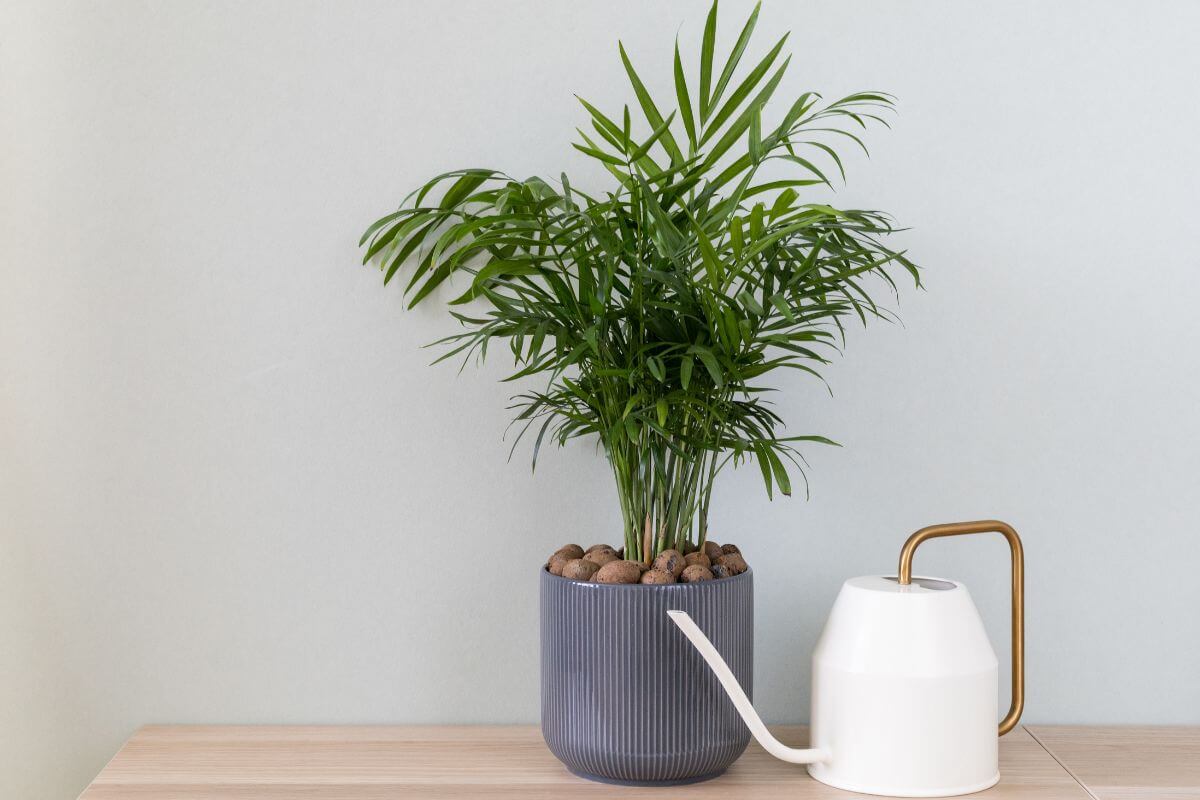
Watering is probably the most difficult challenge for any indoor gardener. Know that tropical palms are equipped to weather both torrential rain showers and storms in general.
They will need water regularly, but it is important not to drown the root system. If the top inch of soil is dry when you touch it, you can give your palm a drink.
The plant trays that the pot containers sit on should be emptied after watering to avoid your palm sitting in water.
Palms can be watered a bit more often in the spring and summer months during its growing season, but less often in the fall and winter. If you are experiencing hot weather, mist your palm a few times daily. Misting can help prevent pests that are attracted to arid climates.
If you have been overwatering, your palm will let you know. It will begin to look unhealthy and potentially even develop root rot. A porous soil mix will help drain excess water.
Indications of overwatering can include:
- Wilted, limp foliage that becomes brown and drops
- Leaves with brown spots in yellow circles
- A bad smell emanating from the soil bed
- White, fuzzy mold on top
- Soggy soil
In these cases, you will need to repot by removing the old soil, washing, and disinfecting the container, and providing a new potting mix.
6.Clean and Prune
Keeping the indoor palm tree clean on a regular basis will keep it healthy. Three to four times a year, give your palm a shower by placing it in the bathtub and giving it a good spray.
This will help to remove dust particulate buildup on the leaves that can interfere with photosynthesis. You can also clean palm foliage with a mixture of water and milk with a soft cloth or cotton ball.
Also, you made need to prune occasionally, but be sure to remove only dead fronds near their base. Fronds are a source of nutrition, so make sure the foliage is truly dead before removing it.
7. Protect Your Indoor Palm From Pests
Pests are common to all houseplants, but spider mites, scale insects, and even mealybugs are particularly attracted to indoor palms.
If you see tiny specks of black on your palm fronds, spider mites may have taken up residence.
Scale insects will show up as light-colored spots on the palm’s fronds.
The mealybug leaves cottony, white deposits on the underside of the foliage
To rid your palm of spider mites and scale insects, use organic pesticides such as neem oil. Scales can be removed manually, but afterward, apply some white oil. If the scale is difficult to remove, try a toothbrush together with insecticidal soap.
Always treat pest infestations outdoors to avoid them moving to other plants you may have.
8. Balanced Diet For Healthy Growth
A balanced diet will go a long way toward keeping your palms thriving. Ideally, a water-soluble palm fertilizer that is formulated specifically for palms should be used.
Avoid feeding your palm more than three to four times a year. Take care not to feed excessively, or you risk fertilizer burn, burning the root ball.
9. Flush Out Mineral and Salt Buildup in the Soil
If you start seeing white deposits, which could be salt or mineral buildup, that can lead to brown leaf tips and edges.
Flushing out the buildup in the soil will help clean it. To do this, take your palm outside if possible and drench it repeatedly a dozen times. Use either distilled water or collected rainwater.
Do this annually or more often if you need to.
10. Take Your Indoor Palm Tree Outside
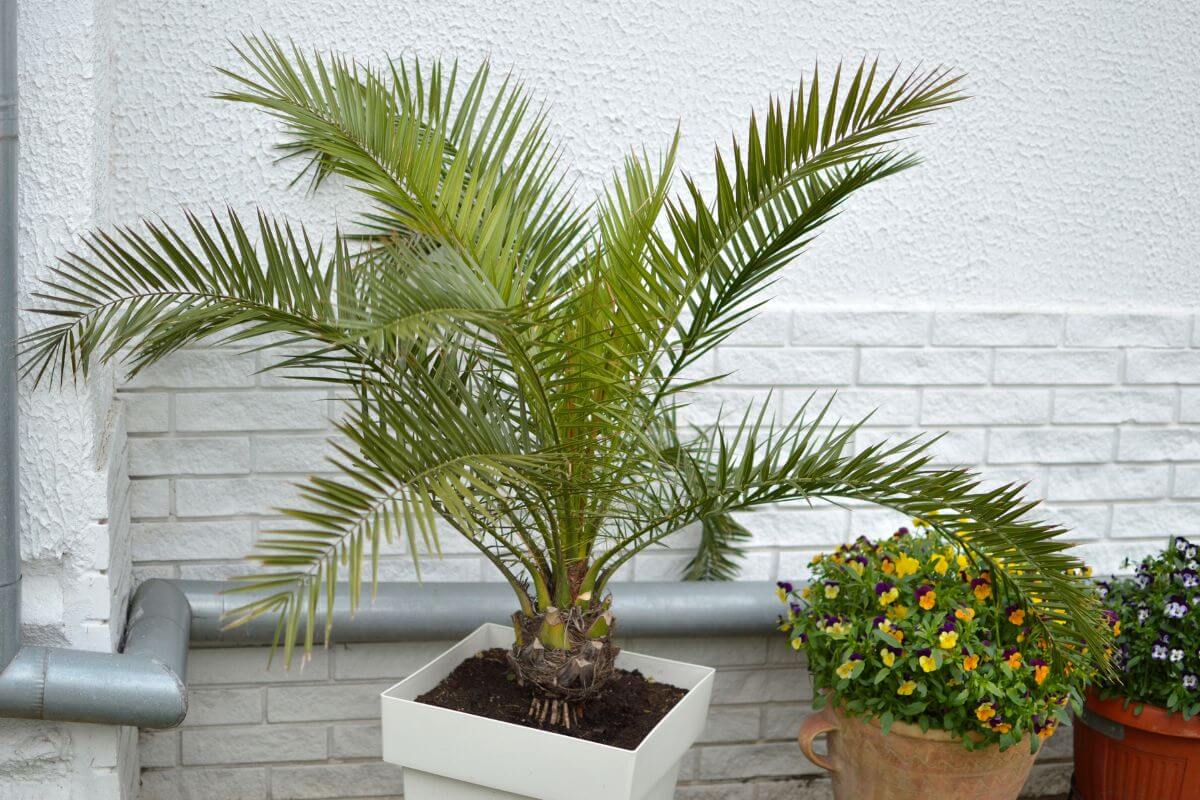
Give your palm some outdoor time. Even if this is an indoor palm, it should get some time outside with the correct conditions, weather permitting.
A month or so outdoors can help with pest infestation prevention and encourage photosynthesis for nourishment.
Getting natural light can do wonders for the palm, but ensure it’s in partial shade and not in direct sunlight.
Indoor Palm Tree Care Final Thoughts
Palm trees make lovely indoor plants. Many are truly low-maintenance and can even bring a bit of privacy thanks to generous foliage creating a natural curtain.
While a palm may cost a bit more than other houseplants, it adds an exotic sculptural quality to your indoor décor and asks very little in return.
For more in-depth are guides, check out these articles for various types of palms:

